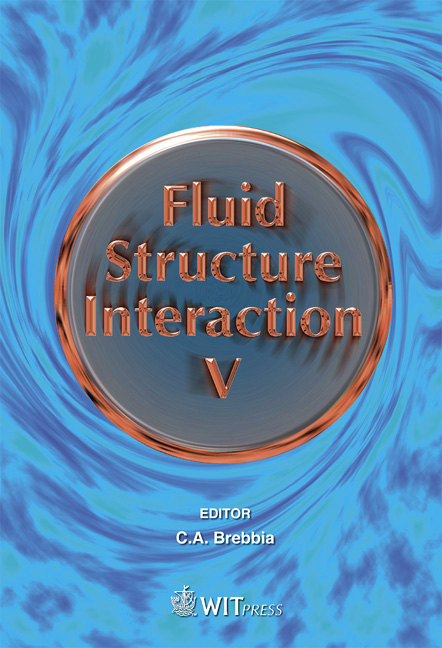Simplified Numerical Method For Understanding The Aeroelastic Response Of Line Slender Structures Under Vortex Shedding Action
Price
Free (open access)
Transaction
Volume
105
Pages
10
Page Range
119 - 128
Published
2009
Size
427 kb
Paper DOI
10.2495/FSI090111
Copyright
WIT Press
Author(s)
A. Vasallo, A. Lorenzana, A. Foces & C. E. Lavín
Abstract
The lock-in and drag amplification phenomenon is studied in a flexible cantilever using a simplified fluid-structure interaction (FSI) algorithm. Navier- Stokes equations for incompressible flow have been solved in 2D in several transverse planes of the line-like structure. A fractional step scheme has been used to solve the fluid field. In each fluid plane, the displacements have been taken into account considering an Arbitrary Lagrangian Eulerian (ALE) approach. The stabilization of convection and diffusion terms has been achieved by means of orthogonal quasi-static subscales. No turbulence model has been included. In order to solve the structural problem, a monodimensional element for thin walled cross-section beams has been considered. The standard second order Newmark method has been used to include the dynamical behaviour equations. The wind has been considered to be an incompressible fluid acting on the structure in a series of planes that are independent among them, and transverse to the structure. For each period of time, the fluid problem was solved, the aeroelastic analysis was carried out, and the geometry of the mesh of each fluid plane was updated according to the structure displacements. Keywords: vortex-induced vibrations, line slender structures, aeroelasticity, coupled problems, lock-in, drag amplification.
Keywords
vortex-induced vibrations, line slender structures, aeroelasticity, coupled problems, lock-in, drag amplification.





